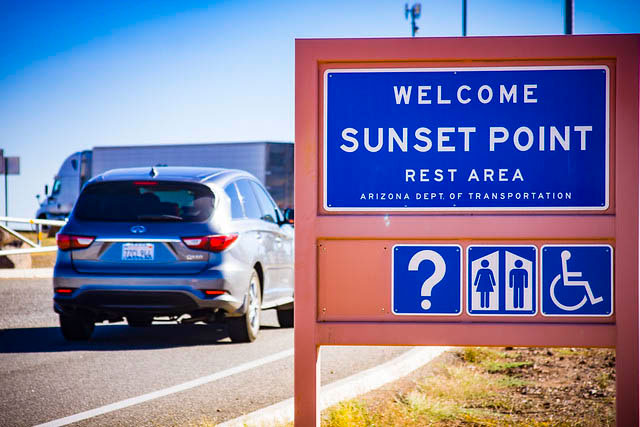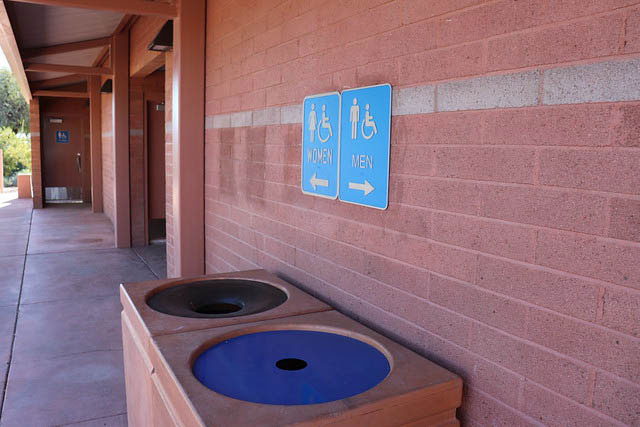At rest areas and elsewhere, ADOT encourages water conservation
At rest areas and elsewhere, ADOT encourages water conservation
PHOENIX – Water at Arizona Department of Transportation rest areas, most of them located in remote desert locations and relying on their own wells, is like water to Arizona overall: There’s only so much of it, a great deal of effort is required to get it where it needs to be and it pays to conserve what you have.
At the Interstate 17 Sunset Point Rest Area, where a million people stop each year, the water comes from a well that’s 1,800 feet deep. Along Interstate 10 in southeastern Arizona, Texas Canyon Rest Area relies on a 5-mile pipeline carrying well water to facilities serving around 800,000 visitors annually. In fact, only two of ADOT’s rest areas are located where water is available through a utility.
That’s part of the reason why ADOT has made changes in recent years that today save 40,000 gallons of water every day across its 28 rest area sites.
Some of these improvements are obvious to visitors, such as lower-flow sinks with metered faucets, waterless urinals and upgraded toilets that use far less water per flush. Others are more subtle, such as ADOT’s decision to switch soap dispensers from liquid to foam, which requires less water to rinse. Still more happen out of public view, such as rest area resident caretakers starting each day by emailing photographs of water meter readings so managers can look for spikes that indicate leaks.

The impetus came from ADOT Director John Halikowski, who had noticed that palm trees and bushes were being over-watered outside ADOT’s administrative building in Phoenix while a few blocks away state lawmakers were discussing the Drought Contingency Plan.
“We all need to look for ways large and small to conserve water, and that includes those of us at ADOT,” Halikowski said. “While our contest turned up great examples of conservation, each of us can do more.”
Another honoree was the ADOT-operated Grand Canyon National Park Airport, where staff members make monthly checks of water meters at every building. If use goes up, they check for and repair leaking toilets, leaks in water lines and any other problems that waste water. The airport also includes shutting off the water in check-out requirements for staff members who live in on-site housing.
As with rest areas, location is one of the reasons why conservation is essential for the airport. Under its agreement with the community of Tusayan, Grand Canyon National Park Airport can only fill its water tanks once in the spring and once in the fall, so each supply has to last.
Other contest entries included installing a thermostat that halved water use by the Deck Park Tunnel’s cooling system and even pointing out a leaky faucet in an employee bathroom.

At rest areas, the goal is taking one good idea and making it consistent statewide, according to Bobby Wheeler, ADOT’s rest area manager.
Case in point: Each rest area now has a valve-exercise program in which valves that are part of water systems are regularly inspected and operated to reduce the chances of a failure. That change required mapping and numbering valves.
Improvements at rest areas have resulted in water flow dropping by about a third at each facility. That means the equipment required to move and treat water has to run less frequently, cutting power use by about 25 percent. Meanwhile, reduced wastewater means less pressure on septic systems.
“We’re always looking for new ways to conserve water,” Wheeler said. “Our systems are evolving, and we’re staying open-minded when it means saving power and water.”
ADOT encourages members of the public to report any water waste they see on ADOT projects, at ADOT facilities and along state highways. Doing that is as simple as visiting azdot.gov/Contact and filling out a convenient online form or calling the phone number for General Non-Motor Vehicle Inquiries.
For more information on ADOT, please visit azdot.gov.
